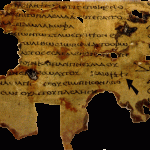
Today’s reading, Alma 49, continues the remarkable story of the treacherous and evil Amalickiah.
As is my practice, I’ll comment upon just one element of this chapter:
It’s often remarked of generals that they typically prepare for the “last war,” and that practices and techniques and events of the next one, accordingly, catch them by surprise. The Maginot Line, for example, was fairly well suited to a relatively static war of the kind (like the trench warfare of World War I) that was fought before the advent of the more dynamic kind of battle facilitated by tanks and other mechanized transport and “aeroplanes.”
Anyway, the Lamanites, who had been at a disadvantage in their previous wars with Moroni because of their lack of body protection, show up for this new war with breastplates modeled on those the Nephites had used. But now, to their astonishment, they see city fortifications — simple ditches and earthen ridges — cast up around their targets. And that seemingly small change, effected by the great Moroni, stymies and frustrates them yet again.
I’m reminded of the famous Arabian Battle of the Trench from the lifetime of Muhammad. His sworn enemies, the Qurayshi pagans of his hometown of Mecca, come to invade his adopted home of Medina, where the exiled Meccan Muslims had established their headquarters. In preparation, Muhammad causes a pit to be dug across the ground that the camel riders of Quraysh would inevitably and necessarily use for their charge against Medina’s defenders. But Quraysh have never seen anything like this before, and their attack fails. It seems an absurdly simple thing, but every innovation — including every military innovation — appears for a first time.











